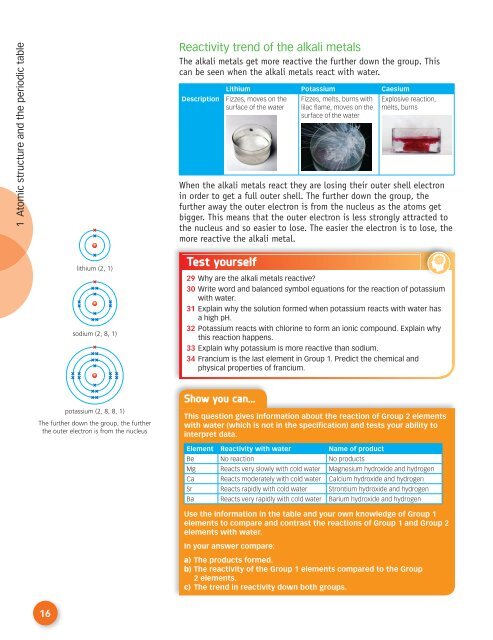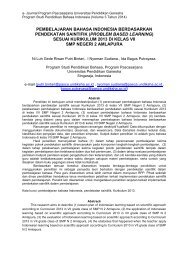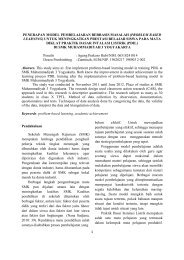Create successful ePaper yourself
Turn your PDF publications into a flip-book with our unique Google optimized e-Paper software.
1 Atomic structure and the periodic table<br />
Reactivity trend of the alkali metals<br />
The alkali metals get more reactive the further down the group. This<br />
can be seen when the alkali metals react with water.<br />
Description<br />
Lithium Potassium Caesium<br />
Fizzes, moves on the<br />
surface of the water<br />
Fizzes, melts, burns with<br />
lilac flame, moves on the<br />
surface of the water<br />
Explosive reaction,<br />
melts, burns<br />
When the alkali metals react they are losing their outer shell electron<br />
in order to get a full outer shell. The further down the group, the<br />
further away the outer electron is from the nucleus as the atoms get<br />
bigger. This means that the outer electron is less strongly attracted to<br />
the nucleus and so easier to lose. The easier the electron is to lose, the<br />
more reactive the alkali metal.<br />
lithium (2, 1)<br />
sodium (2, 8, 1)<br />
Test yourself<br />
29 Why are the alkali metals reactive?<br />
30 Write word and balanced symbol equations for the reaction of potassium<br />
with water.<br />
31 Explain why the solution formed when potassium reacts with water has<br />
a high pH.<br />
32 Potassium reacts with chlorine to form an ionic compound. Explain why<br />
this reaction happens.<br />
33 Explain why potassium is more reactive than sodium.<br />
34 Francium is the last element in Group 1. Predict the chemical and<br />
physical properties of francium.<br />
potassium (2, 8, 8, 1)<br />
The further down the group, the further<br />
the outer electron is from the nucleus<br />
Show you can...<br />
This question gives information about the reaction of Group 2 elements<br />
with water (which is not in the specification) and tests your ability to<br />
interpret data.<br />
Element Reactivity with water Name of product<br />
Be No reaction No products<br />
Mg Reacts very slowly with cold water Magnesium hydroxide and hydrogen<br />
Ca Reacts moderately with cold water Calcium hydroxide and hydrogen<br />
Sr Reacts rapidly with cold water Strontium hydroxide and hydrogen<br />
Ba Reacts very rapidly with cold water Barium hydroxide and hydrogen<br />
Use the information in the table and your own knowledge of Group 1<br />
elements to compare and contrast the reactions of Group 1 and Group 2<br />
elements with water.<br />
In your answer compare:<br />
a) The products formed.<br />
b) The reactivity of the Group 1 elements compared to the Group<br />
2 elements.<br />
c) The trend in reactivity down both groups.<br />
16





